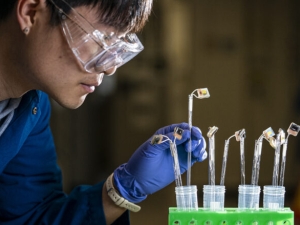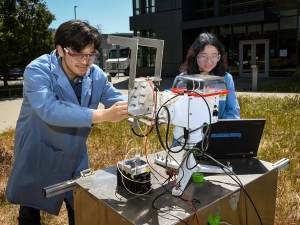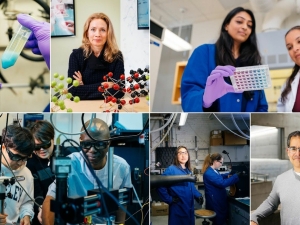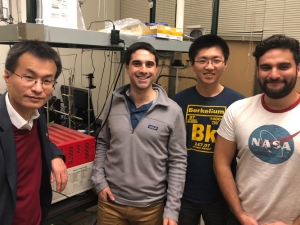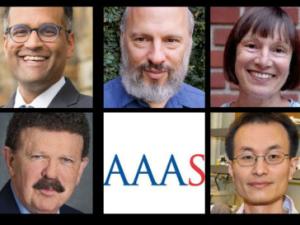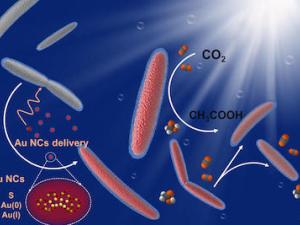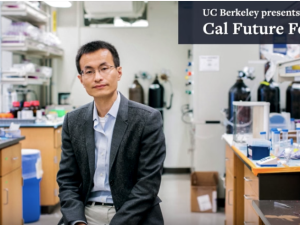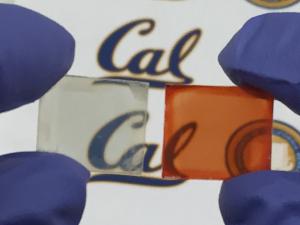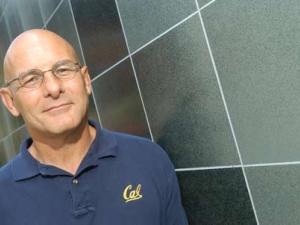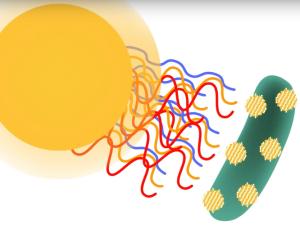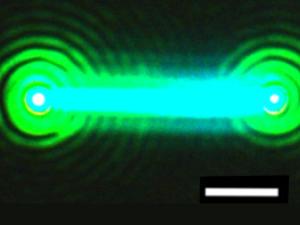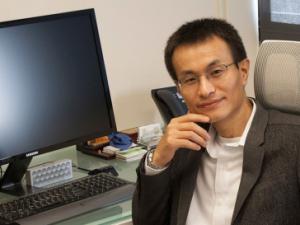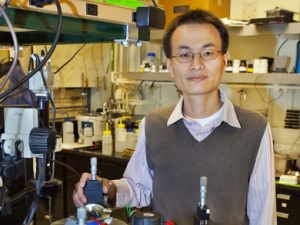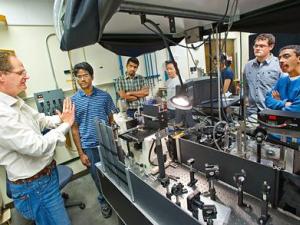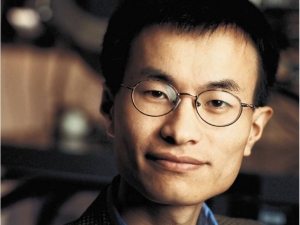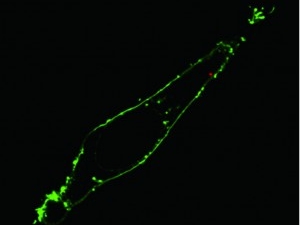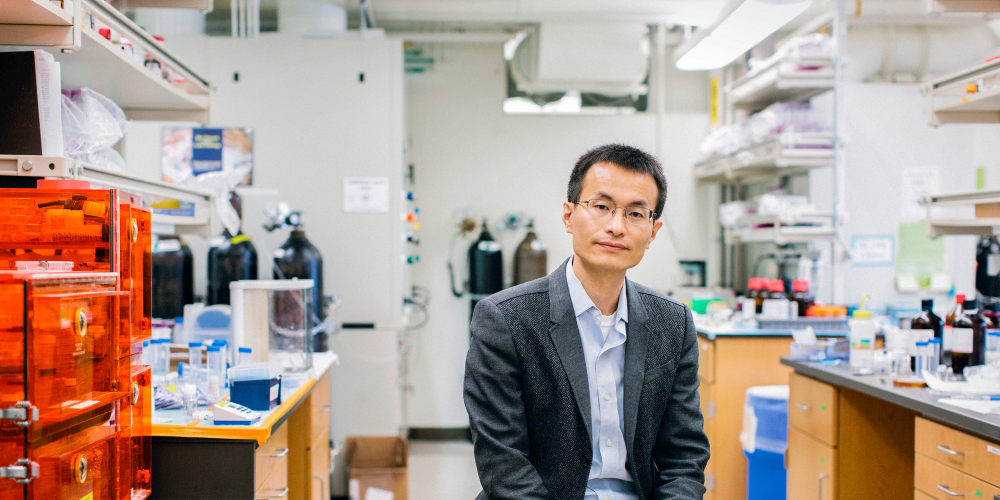

Research Bio
Wires of different forms are an integral part of our human society for centuries. Electricity is being delivered through powerlines to every household; information is routinely transmitted through optical fibers and bridge-building requires the use of mechanically robust cables. In the past 30 years, scientists have fundamentally discovered a new process of making nanoscopic wires, 1000 times thinner than human hairs, enabling a new generation of computing, integrated photonics, and energy and biomedical technologies. A semiconductor nanowire, a new form of semiconductor, by definition, typically has cross-sectional dimensions that can be tuned from 1–100 nm, with lengths spanning from hundreds of nanometers to millimeters. These subwavelength structures represent a new class of semiconductor materials for investigating light generation, propagation, detection, amplification, modulation as well as energy conversion and storage.
After three decades of research, semiconductor nanowires with predictable and controlled electrical properties can be synthesized, thus providing optoelectronically-tunable nanoscale building blocks for device assembly for the first time, including nanoscopic lasers, solar cells, nanofluidic transistors, intracellular optical and electrical probes, thermoelectrics and (bio)photochemical diodes. Nanowire represents an important class of nanostructure building blocks for photovoltaics as well as direct solar-to-fuel conversion because of their high surface area, tunable bandgap, and efficient charge transport and collection. These semiconductor nanowires, with their unique photoelectrochemistry, are then used for artificial photosynthesis based on (bio)photochemical diode system design, where solar energy is converted and stored in chemical bonds in a solar-driven CO2 fixation process.
Research Expertise and Interest
materials chemistry, solid state chemistry, nanoscience, energy science, semiconductor nanowires, nanophotonics, artificial photosynthesis, electrochemistry, photoelectrochemistry, electrocatalysis, photocatalysis
In the News
Scientists Develop Artificial Leaf That Uses Sunlight to Produce Valuable Chemicals
Five Ways LiSA is Advancing Solar Fuels
Berkeley’s Ecosystem of Innovation, Entrepreneurship Combats Climate Change
New Institute Brings Together Chemistry and Machine Learning to Tackle Climate Change
Scientists Grow Lead-Free Solar Material With a Built-In Switch
NASA sweetens the pot: Team wins competition to make space sugar
Five Berkeley top scholars named AAAS fellows
Blue diode illustrates limitations, promise of perovskite semiconductors
Introducing a kinder, gentler way to blow holes in cells
New Director Assumes Helm of Kavli ENSI: Peidong Yang to direct the Kavli Energy NanoScience Institute
Harvesting solar fuels through a bacterium’s unusual appetite for gold
‘Spacesuits’ protect microbes destined to live in space
Artificial leaves to produce fuel on Earth and, one day, Mars
Chemists create tinted windows that also generate electricity
Copper Catalyst Yields High Efficiency CO2-to-Fuels Conversion
Cyborg bacteria turn sunlight into useful chemicals
‘Lasers Rewired’: Scientists Find a New Way to Make Nanowire Lasers
Berkeley Lab and UC Berkeley scientists adapt next-gen solar cell materials for a different purpose.
Chemist Peidong Yang receives MacArthur ‘genius award’
Peidong Yang, a UC Berkeley chemist who is trying to capture carbon dioxide from the air and turn it into a sustainable transportation fuel, has been named a MacArthur “genius” Fellow.
Major Advance in Artificial Photosynthesis Poses Win/Win for the Environment
A potentially game-changing breakthrough in artificial photosynthesis has been achieved with the development of a system that can capture carbon dioxide emissions before they are vented into the atmosphere and then, powered by solar energy, convert that carbon dioxide into valuable chemical products.
Big Step for Next-Generation Fuel Cells and Electrolyzers
A big step in the development of next-generation fuel cells and water-alkali electrolyzers has been achieved with the discovery of a new class of bimetallic nanocatalysts that are an order of magnitude higher in activity than the target set by the DOE.
UC Berkeley, Berkeley Lab announce Kavli Energy NanoScience Institute
The Kavli Foundation has endowed a new institute at the University of California, Berkeley, and the Lawrence Berkeley National Laboratory (Berkeley Lab) to explore the basic science of how to capture and channel energy on the molecular or nanoscale and use this information to discover new ways of generating energy for human use.
Four Berkeley Lab scientists elected to the American Academy of Arts and Sciences
Four Lawrence Berkeley National Laboratory (Berkeley Lab) scientists have been elected to the 2012 class of the American Academy of Arts and Sciences, an honorary society founded in 1780 to recognize leading “thinkers and doers.”
A Single Cell Endoscope: Berkeley Researchers Use Nanophotonics for Optical Look Inside Living Cells
Berkeley researchers have developed a nanowire endoscope that can provide high-resolution optical images of the interior of a single living cell, or precisely deliver genes, proteins, therapeutic drugs or other cargo without injuring or damaging the cell.
California Team to Receive up to $122 Million for Energy Innovation Hub to Develop Method to Produce Fuels from Sunlight
U.S. Deputy Secretary of Energy Daniel Poneman announced a new award of up to $122 million to establish an Energy Innovation Hub aimed at developing revolutionary methods to generate fuels directly from sunlight.

